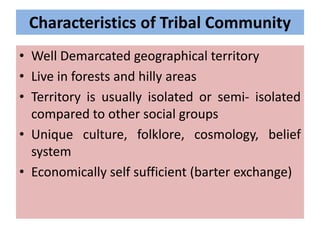
Beyond the Reservation: The Enduring Legacy of Urban Indian Communities
By
The narrative of Native America is often painted with sweeping landscapes of reservations, vast plains, and ancient ceremonies – a powerful imagery that, while true, only tells part of the story. Hidden in plain sight, bustling within the concrete jungles of America’s major cities, lies another vibrant and profoundly resilient chapter: the history of Urban Indian communities. These are not merely scattered individuals, but complex, interconnected societies forged from necessity, policy, and an unwavering spirit of cultural survival and adaptation. Today, over 70% of Native Americans live in urban areas, a demographic shift that profoundly reshaped Indigenous identity, politics, and culture, yet remains largely under-recognized.
The journey of Indigenous peoples to urban centers is not monolithic, nor did it begin with a single event. While the mid-20th century saw a dramatic surge, Native Americans have always engaged with and navigated non-Indigenous settlements. Even before the formal establishment of reservations, Indigenous trade networks and seasonal migrations often brought people into proximity with burgeoning colonial towns. However, the early 20th century marked a more significant, albeit often forced, migration.
The Early Stirrings: Push and Pull Factors
As federal policies like the Dawes Act (General Allotment Act of 1887) systematically dismantled communal landholdings and stripped tribes of millions of acres, economic opportunities on reservations dwindled. Poverty, lack of infrastructure, and the allure of wage labor in rapidly industrializing cities began to draw some Native individuals and families away from their ancestral lands. World War I and II further accelerated this trend, as Native men and women joined the military or sought defense industry jobs in cities like Los Angeles, Chicago, and Seattle, experiencing a new form of integration, albeit temporary for many.

These early urban migrants often faced intense discrimination, limited housing options, and a profound sense of cultural isolation. Yet, even in these challenging environments, the seeds of community were sown. Small clusters of Native families from various tribes would often settle in the same neighborhoods, finding solace and strength in shared experiences and nascent forms of intertribal support networks. These early urban dwellers laid the groundwork for the more structured communities that would emerge later.
The Mid-Century Deluge: Termination and Relocation
The most significant catalyst for the formation of distinct Urban Indian communities was the federal government’s dual policy of "Termination" and "Relocation" in the post-World War II era. Fueled by a desire to assimilate Native Americans into mainstream society and reduce federal expenditures, the Eisenhower administration championed these policies. Termination aimed to end the federal government’s recognition of tribal sovereignty and its trust responsibility to tribes, effectively dissolving the legal status of many Indigenous nations. Simultaneously, the Bureau of Indian Affairs (BIA) launched the Indian Relocation Program in 1952.
This program promised Native Americans on reservations a pathway to economic prosperity by moving them to major cities. The BIA offered one-way bus tickets, some vocational training, and limited assistance with housing and job placement in designated "relocation cities" such as Chicago, Los Angeles, Denver, Cleveland, Minneapolis, and Seattle. The rhetoric was one of opportunity and progress, but the reality was often far harsher.
"The BIA was essentially emptying out reservations and dumping people into cities without adequate support," notes historian Dr. David Treuer in his book "The Heartbeat of Wounded Knee." "They were told they would find jobs and a better life, but many found only poverty, racism, and a profound cultural dislocation."
Tens of thousands of Native Americans, often young and hopeful, made the journey. Between 1952 and 1968, over 100,000 Indigenous people relocated through the program, with countless others following family and friends. They arrived in cities unprepared for the cultural shock, the lack of community infrastructure, and the pervasive discrimination in housing, employment, and public services. Many found the promised jobs were menial and low-paying, and the vocational training inadequate. Homesickness and a sense of alienation were common, leading many to return to their reservations, sometimes repeatedly. However, a significant number stayed, determined to carve out a new life.
Forging Community in the Urban Landscape
The resilience of these relocatees was extraordinary. Faced with a void of support, they began to create their own. From this crucible emerged the first formal Urban Indian Centers. These centers, often started in humble storefronts, basements, or borrowed church spaces, became vital lifelines. They provided essential services that the BIA and city governments failed to offer: job placement assistance, emergency housing, food banks, legal aid, and, crucially, a place for cultural connection.
"We had to build everything from scratch," recalls an elder quoted in a documentary about the Chicago American Indian Center, one of the oldest in the nation, founded in 1953. "There was no one else to help us. So we helped each other. We built our own family here in the city."

These centers fostered a new "pan-Indian" identity. While tribal affiliations remained strong, the shared experience of urban life and the need for collective action brought together people from hundreds of different tribes. Sioux, Navajo, Cherokee, Ojibwe, Pueblo, and many others found common ground, celebrating each other’s traditions and forming new intertribal bonds. Powwows, once exclusive to reservations, became vibrant urban events, adapting to city parks and community halls, demonstrating that Indigenous culture was not static but dynamic and capable of thriving in new environments.
Activism and Self-Determination
The growing concentration of Native Americans in cities also created a potent force for political change. Urban Indian communities played a pivotal role in the Red Power movement of the late 1960s and 1970s. The American Indian Movement (AIM), for example, found many of its early members and much of its support in urban areas, where frustration over systemic injustice and cultural suppression simmered.
The occupation of Alcatraz Island from 1969 to 1971, a watershed moment in Indigenous activism, was largely conceived and sustained by urban Native students and activists from the San Francisco Bay Area. This act of defiance, which garnered international attention, demanded the return of unused federal lands to Native peoples and highlighted the plight of Indigenous communities, both urban and reservation-based. It was a clear demonstration that urban Indians were not assimilated but were powerful advocates for self-determination and treaty rights.
The activism of urban communities contributed significantly to the eventual shift in federal policy. The Termination era officially ended in 1973, replaced by the Self-Determination era, which recognized tribal sovereignty and empowered tribes to manage their own affairs. This change also led to increased federal funding and recognition for Urban Indian organizations, allowing them to expand their services and solidify their presence.
The Contemporary Urban Indian Landscape
Today, urban Native American communities are incredibly diverse and dynamic. Cities like Los Angeles, Phoenix, Oklahoma City, Minneapolis, and Seattle boast some of the largest Indigenous populations, representing hundreds of distinct tribal nations. These communities are not homogenous but are characterized by a rich tapestry of cultures, languages, and experiences.
While the challenges of the past – poverty, discrimination, and inadequate access to healthcare and education – persist, urban Indian communities continue to innovate and thrive. Urban Indian health clinics provide culturally sensitive care, often serving as crucial hubs for community well-being. Cultural centers offer language classes, traditional arts workshops, and intergenerational programming, ensuring that traditions are passed down. Youth organizations are empowering the next generation of leaders, artists, and activists.
"Being Native in the city isn’t about losing your culture; it’s about finding new ways to live it, strengthen it, and share it," says Dr. Cutcha Risling Baldy (Hupa, Yurok, Karuk), a scholar of Native American Studies. "It’s about adapting, innovating, and building a future while deeply honoring the past."
The legacy of the Relocation era, while born of coercive policies, inadvertently created new spaces for Indigenous identity to flourish. It forced an adaptation that led to the creation of vibrant, resilient, and politically powerful communities that continue to advocate for Indigenous rights, celebrate their diverse cultures, and contribute immensely to the social and economic fabric of America’s cities.
The history of Urban Indian communities is a testament to the enduring spirit of Indigenous peoples – a story not just of survival, but of profound adaptability, community building, and an unyielding commitment to identity in the face of immense pressures. It is a vital part of the broader American narrative that deserves to be seen, understood, and celebrated, moving beyond the stereotypes to recognize the rich Indigenous presence in every corner of the nation.


